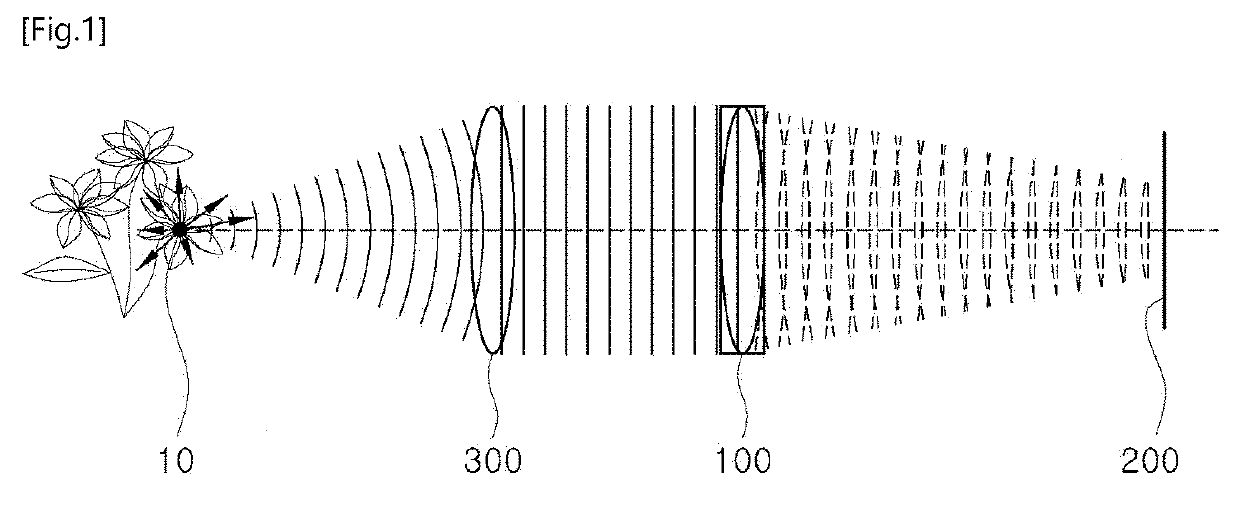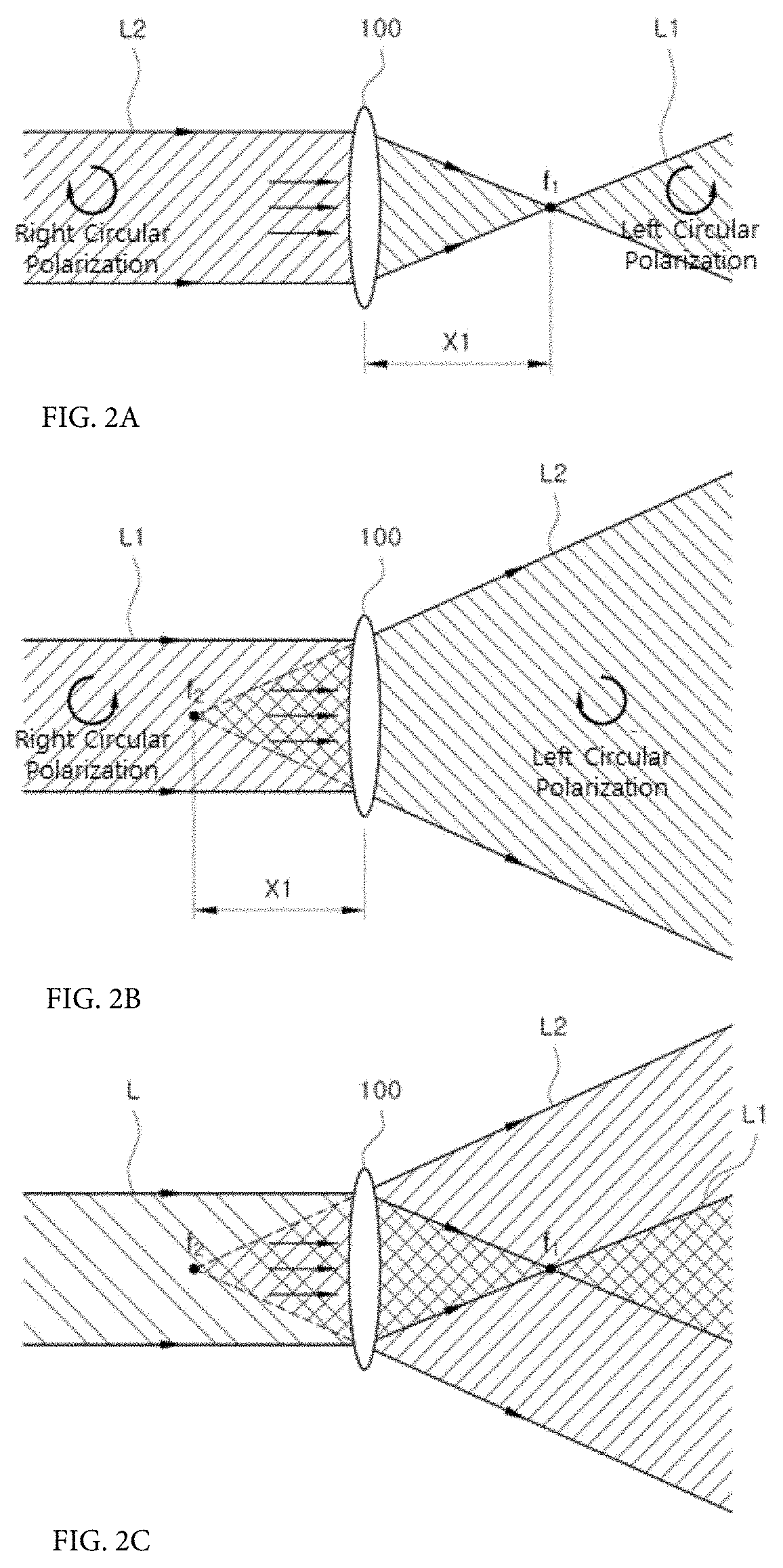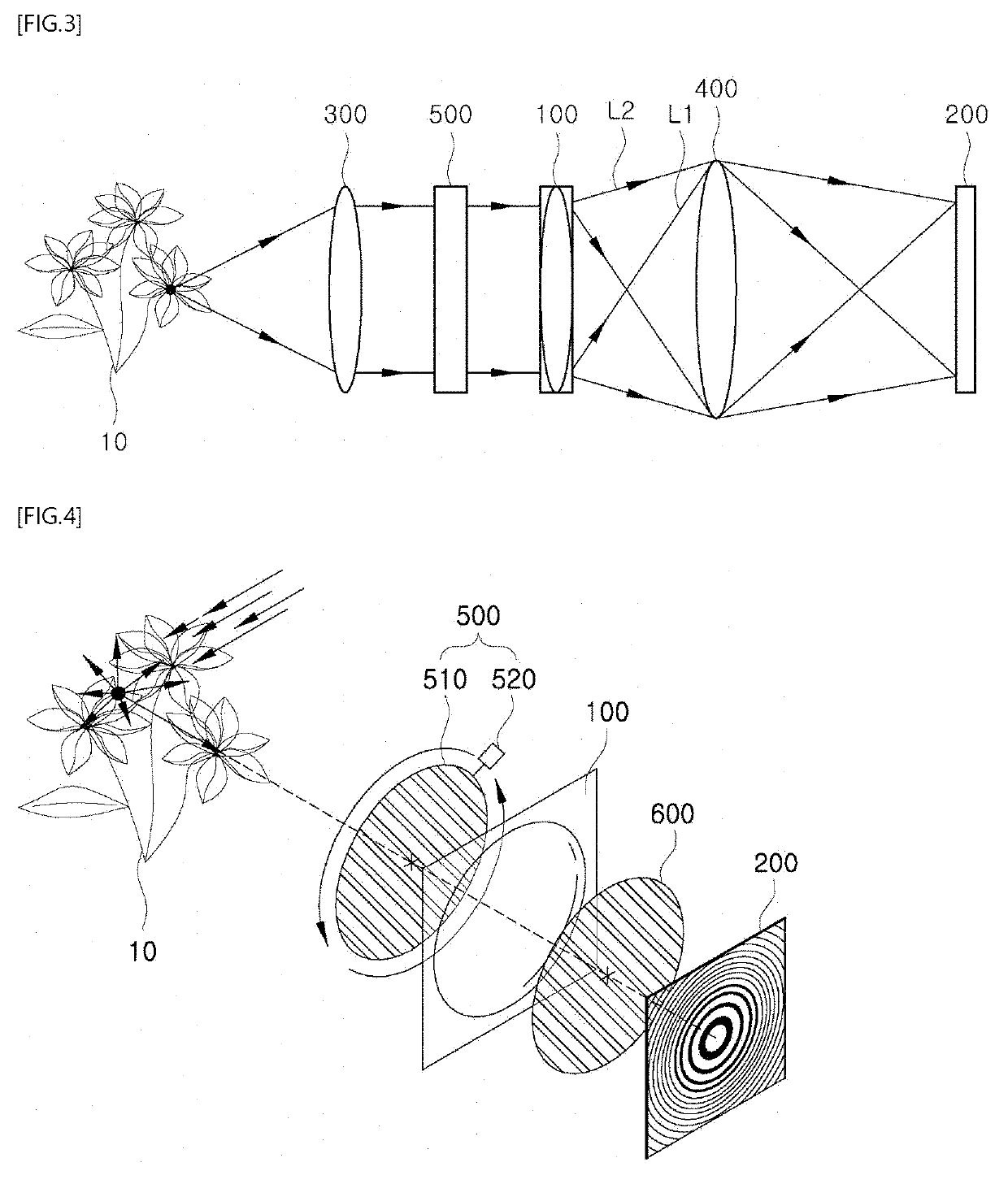Self-interference digital holographic system
a digital holographic and self-interference technology, applied in the field of self-interference digital holographic systems, can solve the problems of fundamental problems, headaches or dizziness caused to human viewers, and insufficient consideration of image alignment, and achieve the effect of simple optical components
- Summary
- Abstract
- Description
- Claims
- Application Information
AI Technical Summary
Benefits of technology
Problems solved by technology
Method used
Image
Examples
Embodiment Construction
[0048]Hereinafter, exemplary embodiments of the invention will be described in detail with reference to the accompanying drawings. Wherever possible, the same reference numerals will be used throughout the drawings and the description to refer to the same or like parts. In the following description, it is to be noted that, when the functions of conventional elements and the detailed description of elements related to the present disclosure may render the gist of the present invention unclear, a detailed description of those elements will be omitted.
[0049]FIG. 1 is a conceptual view illustrating a basic configuration of a self-interference digital holographic system according to exemplary embodiments, FIGS. 2A, 2B, and 2C are conceptual views illustrating characteristics of a geometric phase lens according to an exemplary embodiment, and FIG. 3 is a conceptual view illustrating a configuration of a self-interference digital holographic system to which a phase shifter according to an ...
PUM
 Login to View More
Login to View More Abstract
Description
Claims
Application Information
 Login to View More
Login to View More - R&D
- Intellectual Property
- Life Sciences
- Materials
- Tech Scout
- Unparalleled Data Quality
- Higher Quality Content
- 60% Fewer Hallucinations
Browse by: Latest US Patents, China's latest patents, Technical Efficacy Thesaurus, Application Domain, Technology Topic, Popular Technical Reports.
© 2025 PatSnap. All rights reserved.Legal|Privacy policy|Modern Slavery Act Transparency Statement|Sitemap|About US| Contact US: help@patsnap.com



